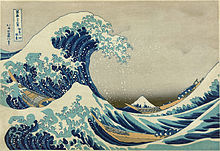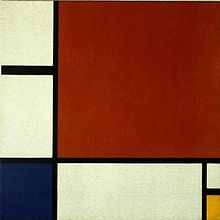
КАТЕГОРИИ:
Архитектура-(3434)Астрономия-(809)Биология-(7483)Биотехнологии-(1457)Военное дело-(14632)Высокие технологии-(1363)География-(913)Геология-(1438)Государство-(451)Демография-(1065)Дом-(47672)Журналистика и СМИ-(912)Изобретательство-(14524)Иностранные языки-(4268)Информатика-(17799)Искусство-(1338)История-(13644)Компьютеры-(11121)Косметика-(55)Кулинария-(373)Культура-(8427)Лингвистика-(374)Литература-(1642)Маркетинг-(23702)Математика-(16968)Машиностроение-(1700)Медицина-(12668)Менеджмент-(24684)Механика-(15423)Науковедение-(506)Образование-(11852)Охрана труда-(3308)Педагогика-(5571)Полиграфия-(1312)Политика-(7869)Право-(5454)Приборостроение-(1369)Программирование-(2801)Производство-(97182)Промышленность-(8706)Психология-(18388)Религия-(3217)Связь-(10668)Сельское хозяйство-(299)Социология-(6455)Спорт-(42831)Строительство-(4793)Торговля-(5050)Транспорт-(2929)Туризм-(1568)Физика-(3942)Философия-(17015)Финансы-(26596)Химия-(22929)Экология-(12095)Экономика-(9961)Электроника-(8441)Электротехника-(4623)Энергетика-(12629)Юриспруденция-(1492)Ядерная техника-(1748)
Vocabulary game
|
|
|
|
Art
Art is a diverse range of human activities and the products of those activities; this article focuses primarily on the visual arts, which includes the creation of images or objects in fields including painting, sculpture, printmaking, photography, and other visual media. Architecture is often included as one of the visual arts; however, like the decorative arts, it involves the creation of objects where the practical considerations of use are essential—in a way that they usually are not in a painting, for example. Music, theatre, film, dance, and other performing arts, as well as literature and other media such as interactive media, are included in a broader definition of art or the arts. Until the 17th century, art referred to any skill or mastery and was not differentiated from crafts or sciences. In modern usage after the 17th century, where aesthetic considerations are paramount, the fine arts are separated and distinguished from acquired skills in general, such as the decorative or applied arts.
Art may be characterized in terms of mimesis (its representation of reality), expression, communication of emotion, or other qualities. During the Romantic period, art came to be seen as "a special faculty of the human mind to be classified with religion and science". Though the definition of what constitutes art is disputed and has changed over time, general descriptions mention an idea of imaginative or technical skill stemming from human agency and creation.
The nature of art, and related concepts such as creativity and interpretation, are explored in a branch of philosophy known as aesthetics.
The creative arts are often divided into more specific categories, each related to its technique, or medium, such as decorative arts, plastic arts, performing arts, or literature. Unlike scientific fields, art is one of the few subjects that are academically organized according to technique. An artistic medium is the substance or material the artistic work is made from, and may also refer to the technique used. For example, paint is a medium used in painting, and paper is a medium used in drawing.
An art form is the specific shape, or quality an artistic expression takes. The media used often influence the form. For example, the form of a sculpture must exist in space in three dimensions, and respond to gravity. The constraints and limitations of a particular medium are thus called its formal qualities. To give another example, the formal qualities of painting are the canvas texture, color, and brush texture. The formal qualities of video games are non-linearity, interactivity and virtual presence. The form of a particular work of art is determined by the formal qualities of the media, and is not related to the intentions of the artist or the reactions of the audience in any way whatsoever as these properties are related to content rather than form.
A genre is a set of conventions and styles within a particular medium. For instance, well recognized genres in film are western, horror and romantic comedy. Genres in music include death metal and trip hop. Genres in painting include still life and pastoral landscape. A particular work of art may bend or combine genres but each genre has a recognizable group of conventions, clichés and tropes. (One note: the word genre has a second older meaning within painting; genre painting was a phrase used in the 17th to 19th centuries to refer specifically to paintings of scenes of everyday life and is still used in this way.)


The Great Wave off Kanagawa byHokusai (Japanese, 1760–1849), colored woodcut print


Composition II in Red, Blue, and Yellow (1930) by Piet Mondrian (Dutch, 1872–1944).
The style of an artwork, artist, or movement is the distinctive method and form followed by the respective art. Any loose brushy, dripped or poured abstract painting is called expressionistic. Often a style is linked with a particular historical period, set of ideas, and particular artistic movement. So Jackson Pollock is called an Abstract Expressionist.
A particular style may have specific cultural meanings. For example, Roy Lichtenstein - a painter associated with the American Pop art movement of the 1960s - was not a pointillist, despite his use of dots. Lichtenstein used evenly spaced Ben-Day dots (the type used to reproduce color in comic strips) as a style to question the "high" art of painting with the "low" art of comics, thus commenting on class distinctions in culture. Pointillism, a technique in late Impressionism (1880s) developed especially by the artist Georges Seurat, employs dots to create variation in color and depth in an attempt to approximate the way people really see color. Both artists use dots, but the particular style and technique relate to the artistic movement adopted by each artist.
These are all ways of beginning to define a work of art, to narrow it down.
Imagine you are an art critic whose mission is to compare the meanings you find in a wide range of individual artworks. How would you proceed with your task? One way to begin is to examine the materials each artist selected in making an object, image video, or event. The decision to cast a sculpture in bronze, for instance, inevitably affects its meaning; the work becomes something different from how it might be if it had been cast in gold or plastic or chocolate, even if everything else about the artwork remains the same. Next, you might examine how the materials in each artwork have become an arrangement of shapes, colors, textures, and lines. These, in turn, are organized into various patterns and compositional structures. In your interpretation, you would comment on how salient features of the form contribute to the overall meaning of the finished artwork. [But in the end] the meaning of most artworks... is not exhausted by a discussion of materials, techniques, and form. Most interpretations also include a discussion of the ideas and feelings the artwork engenders.
|
|
|
|
|
Дата добавления: 2015-04-25; Просмотров: 578; Нарушение авторских прав?; Мы поможем в написании вашей работы!